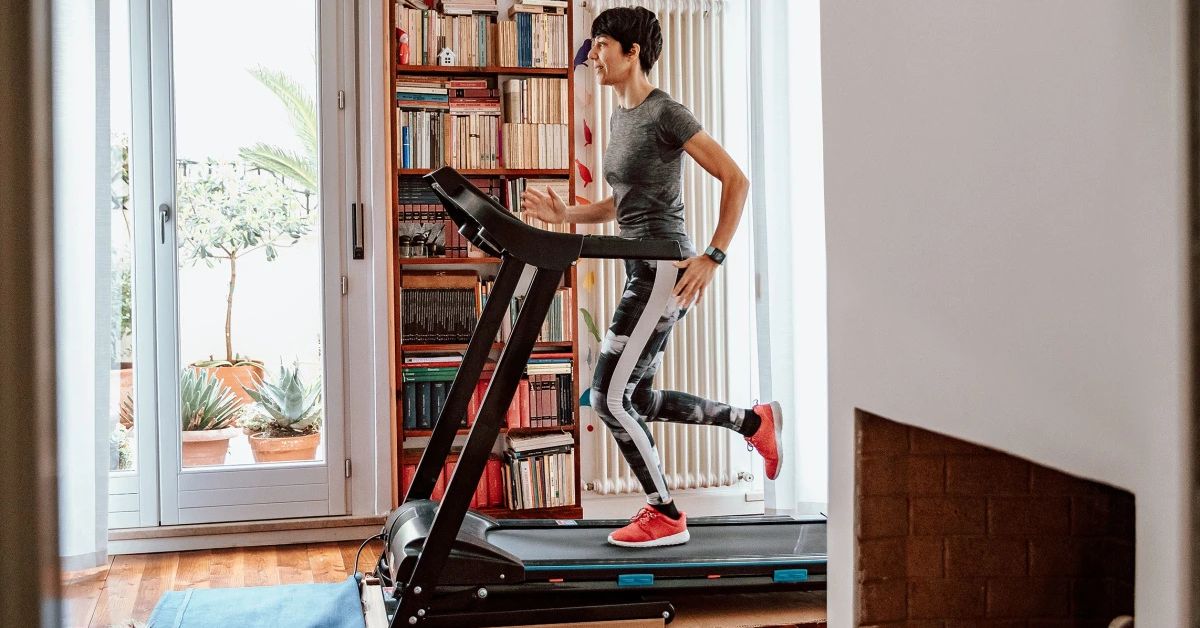Whether you’re building a minimalist setup or a fully equipped fitness haven, planning is essential to make the most of your home gym. From choosing the right equipment to considering maintenance needs, here are a few tips to help you ensure your home gym meets your expectations and the fitness safety standards.
Set Clear Fitness Goals
Are you focusing on strength training, cardio, or a mix of both? Having a clear plan will help you select the right equipment and layout for your home gym. For example, if cardio is your priority, investing in a quality treadmill or exercise bike might top your list.
Assess Your Available Space
The size and layout of your space play a role in determining what equipment you can accommodate. Measure your room properly and consider factors like ceiling height and floor stability. Make sure you leave enough room for movement and stretching. Compact equipment like foldable treadmills and adjustable weight benches can maximize small spaces.
Create a Realistic Budget
Building a home gym can range from affordable to extravagant! Put together a budget early. Allocate funds for essential items first. And don’t forget to include costs for:
- Lighting: Proper lighting is important for creating an inviting and functional workout space. Consider adjustable LED lighting that can brighten the room for high-energy workouts or create a calmer ambiance for yoga and stretching sessions.
- Ventilation and Climate Control: A good ventilation system or a portable air conditioner ensures proper airflow and keeps your gym comfortable during workouts. A fan or dehumidifier may also be necessary if the gym is in a garage or basement.
- Storage: Budget for racks, shelves, or cabinets to store weights, resistance bands, yoga mats, and other equipment. Efficient storage keeps the gym organized and prevents clutter, ensuring a safer and more enjoyable workout environment.
Keep in mind that quality equipment reduces the risk of frequent repairs.
Choose Versatile Equipment
Adjustable dumbbells, resistance bands, and all-in-one workout stations can provide a full-body workout without cluttering your gym. If you’re considering a treadmill, look for models with additional features like incline settings and heart rate monitors to maximize your investment.
Invest in Quality Flooring
Proper flooring is one of the most important investments for your home gym. It not only protects your home’s structural integrity but also enhances the functionality, safety, and comfort of your workout space. Here are five flooring options to consider and their benefits:
- Rubber Mats: A versatile and durable choice, perfect for absorbing impact from heavyweights and high-intensity exercises. They reduce noise and vibration from cardio equipment, are easy to clean, and can handle heavy foot traffic.
- Interlocking Foam Tiles: These lightweight, easy-to-install tiles provide a soft, cushioned surface for low-impact workouts like yoga, pilates, or stretching. They also offer a non-slip surface and are an excellent choice for temporary or multi-use spaces since they can be disassembled and stored easily.
- Vinyl Flooring: For a sleek, polished look, vinyl flooring is a fantastic option. It’s water-resistant, easy to clean, and provides a firm surface suitable for all types of exercises. Vinyl is also cost-effective and can mimic the appearance of hardwood or stone, adding style to your gym.
- Carpet Tiles: A comfortable and affordable solution for home gyms focused on lighter activities like stretching, meditation, or bodyweight exercises. They provide some cushioning while maintaining a firm base for stability. And, if a tile gets damaged, you can replace it individually without redoing the entire floor.
- Cork Flooring: Cork is an eco-friendly option that offers excellent shock absorption and noise reduction. It’s naturally resistant to mold and mildew, and it’s soft underfoot, which provides good traction and is ideal for a range of activities.
Plan for Maintenance like Treadmill Repair
Regular maintenance keeps your equipment in top shape and extends its lifespan. For instance, treadmills require periodic lubrication, belt adjustments, and motor inspections. Neglecting maintenance can lead to the need for treadmill repair and other urgent repairs. Consider purchasing a service plan or learning basic maintenance tasks to keep everything in shape.
Incorporate Safety Features
Safety should always be a priority. Install mirrors to monitor your form, use equipment with safety locks, and ensure your gym has a fire extinguisher and first aid kit. For machines like treadmills, always familiarize yourself with emergency stop functions.
Test Before You Buy
Whenever possible, test equipment before purchasing. Visit local stores and try out treadmills, ellipticals, and other machines. This hands-on experience can help you evaluate comfort, noise levels, and ease of use. Reading online reviews can also provide valuable insights.
Conclusion
Creating a home gym is an empowering step toward achieving your fitness goals, but it requires careful planning and maintenance to avoid unnecessary challenges.
By setting clear goals, choosing versatile equipment, and prioritizing safety, you’ll set yourself up for success. And don’t forget the importance of regular upkeep! With these tips in mind, you’ll create a home gym that supports your fitness journey for years to come.
Sponsored blog post

